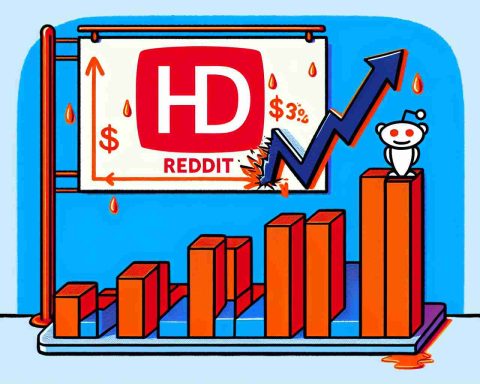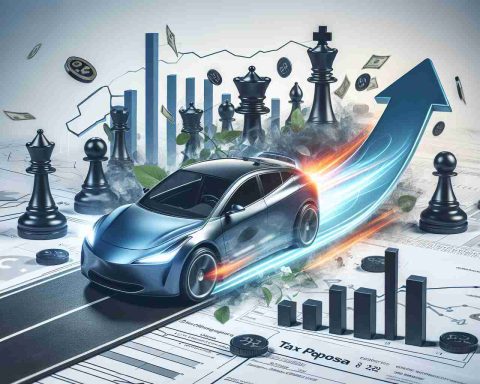In a strategic move to boost its competitive edge in the semiconductor industry, Samsung Electronics has made significant changes to its leadership team. The South Korean tech leader announced Jun Young-hyun as the new co-CEO and head of the memory chip division, while also appointing Han Jin-man as president of its foundry business.
In addition, Nam Seok Woo, formerly responsible for overseeing chip factory engineering, steps into a new role as chief technology officer for the foundry business, signaling an enhanced focus on technological innovation within that sector.
Despite these leadership adjustments, Samsung’s shares saw a 3% drop, reflecting ongoing investor concerns about the company’s ability to keep pace with competitors like SK Hynix, especially in the crucial area of advanced chip technologies. Recent struggles in the memory chip market have put a damper on anticipated growth, even as demand for cutting-edge components fuel the artificial intelligence industry.
Jun’s previous leadership of the semiconductor division started in May, but challenges remain as reflected by a substantial decline in third-quarter profits. Efforts to recapture market dominance are expected under the new leadership structure. Industry analysts suggest that by organizing under the Device Solutions division, led by Jun, the company could strategically manage unsteady market conditions and potentially regain its position.
Samsung’s focus on internal stability, aligning under steady top-level guidance, is considered by analysts as a deliberate choice aimed at navigating current uncertainties in the semiconductor landscape.
Unveiling the Impact of Leadership Shifts in the Semiconductor World
In a landscape defined by rapid technological advancements and fierce competition, the recent leadership reshuffle at Samsung Electronics reflects broader dynamics within the global semiconductor industry. While the initial announcement highlighted the appointments of Jun Young-hyun and Han Jin-man to bolster their respective divisions, the ripple effects of these changes offer more profound insights into the strategic maneuvers affecting communities, economies, and technological ecosystems worldwide.
Implications for the Global Semiconductor Industry
The semiconductor industry is a critical backbone of modern technology, powering everything from smartphones and computers to cars and industrial machinery. Samsung’s decision to revamp its leadership can be seen as a response to global challenges such as supply chain disruptions and geopolitical tensions. These factors are reshaping how major players operate, innovate, and compete worldwide.
Community and Economic Impact
The leadership shift not only affects corporate strategy but also has implications for the regions where Samsung and similar companies operate. For communities around major semiconductor facilities, these changes can mean shifts in employment patterns and local economic conditions. A strengthened focus on the foundry business, as indicated by the new appointments, might result in increased investment in manufacturing hubs, potentially boosting local economies and creating job opportunities.
On a broader economic scale, Samsung’s strategic moves could affect global chip supply stability. As one of the largest semiconductor manufacturers, any shifts in Samsung’s output capabilities could influence tech giants like Apple and Google, affecting product release timelines and pricing strategies thereafter.
Advantages and Disadvantages of the Leadership Change
Advantages:
– Focused Vision: The new leadership structure, with a clear delineation of roles in key divisions, promises more streamlined decision-making.
– Innovation Drive: With Nam Seok Woo’s appointment as the chief technology officer for the foundry business, there’s a strong signal of intensified focus on technological innovation and R&D.
– Market Adaptation: By reorganizing around the Device Solutions division, Samsung aims to better adapt to fluctuating market demands. This could lead to more agile responses to consumer needs and a stronger competitive stance.
Disadvantages:
– Investor Uncertainty: The 3% dip in share prices following the announcement underscores investor anxiety. It reflects concerns over Samsung’s long-term strategy and ability to outpace competitors like SK Hynix.
– Potential Operational Disruptions: Leadership changes can sometimes lead to initial disruptions as new visions and strategies are implemented across divisions.
– Vulnerability to External Forces: Despite internal restructuring, Samsung remains vulnerable to external shocks such as trade tensions and global semiconductor shortages.
Controversies and Questions Ahead
The semiconductor industry’s complexity raises several questions about the true effectiveness of leadership changes as a competitive strategy. Will Samsung’s revamped leadership be able to turn around its recent profit declines? Can they overcome external pressures and internal hurdles to maintain their market dominance?
These questions highlight ongoing controversies and debates within industry circles. For instance, some analysts argue that leadership changes alone aren’t sufficient without parallel investments in emerging technologies and sustainable practices.
Conclusion and Further Reading
As Samsung navigates these challenges, it must also address broader concerns such as ethical sourcing of materials and environmental sustainability. These factors will play a crucial role in shaping the future of semiconductor manufacturing.
For more information on the broader semiconductor industry and its impact on global technology trends, visit Samsung or explore resources at Intel, one of Samsung’s key competitors.
In conclusion, while Samsung’s leadership changes are a step towards strategic positioning, their true impact will depend on how effectively they can address both internal and external challenges in the years to come.





















